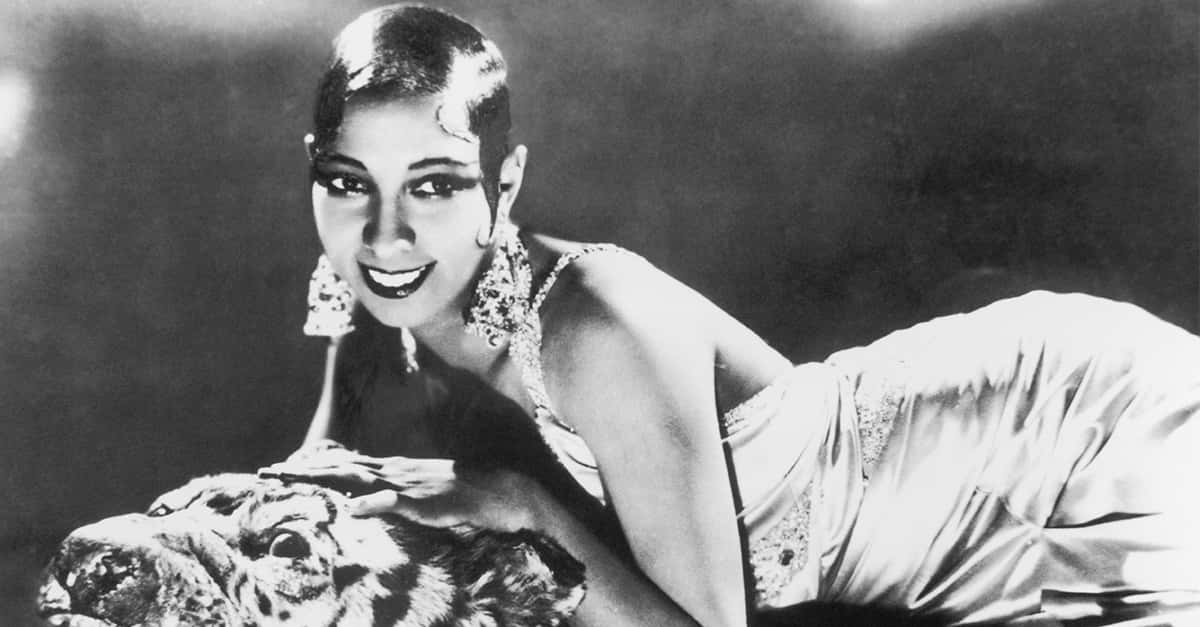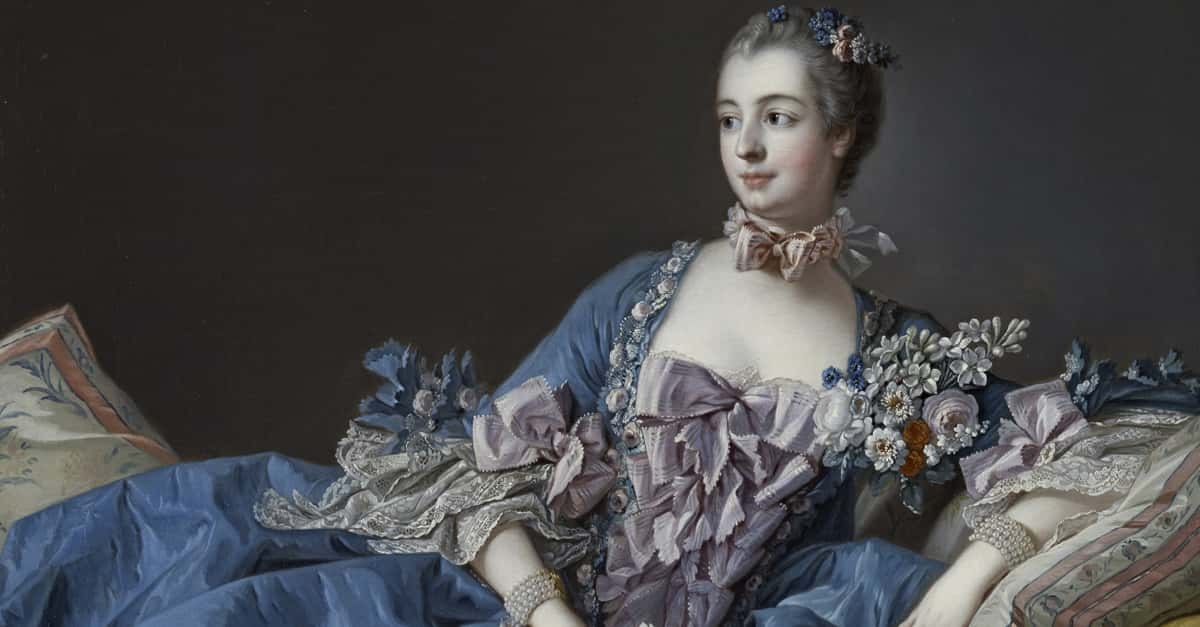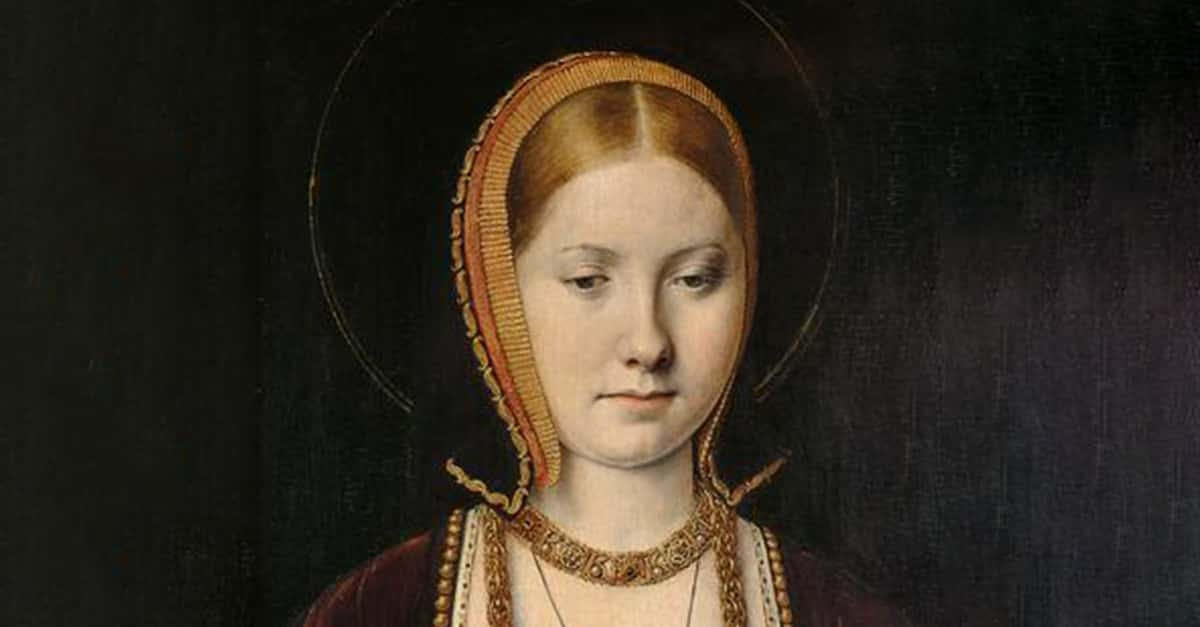There Is More We Just Found Out
The Galloway Hoard was thought to be another buried Viking treasure—until a mysterious inscription revealed a shocking secret. This discovery is rewriting history. It proves that Viking wealth was beyond plunder and something far more complex.

Why It Was Called The Galloway Hoard
Before we take you down this rabbit hole, it's only fair that we begin with what the term “Galloway Hoard” is, right? So, back in the day, older civilizations would hide their treasures. This belonged to the Vikings. That name is because of the spot where the “hoard” was unearthed.
 National Museums Scotland, CC BY-SA 4.0, Wikimedia Commons
National Museums Scotland, CC BY-SA 4.0, Wikimedia Commons
Discovery Of The Galloway Hoard In 2014
Buried for over a thousand years, the Galloway Hoard surfaced in 2014 when metal detectorists struck literal gold near Kirkcudbright, Scotland. What started as a routine treasure hunt became one of Britain’s most significant Viking-age discoveries. It unearths a stunning mix of silver, gold, and rare artifacts.
 -JvL- CC BY 2.0, Wikimedia Commons
-JvL- CC BY 2.0, Wikimedia Commons
Initial Excavation By Dumfries And Galloway Council Archaeologist
The stash’s value meant immediate intervention. So, local archaeologists swooped in, carefully unearthing the cache while ensuring proper documentation. Every item was meticulously extracted and cataloged to prevent damage and preserve historical integrity. Their swift action protected a Viking treasure that would later rewrite history books.
 Billy McCrorie, CC BY-SA 2.0, Wikimedia Commons
Billy McCrorie, CC BY-SA 2.0, Wikimedia Commons
Formation Of “The Unwrapping The Galloway Hoard” Research Project
Determined to crack the mystery, experts launched the Unwrapping the Galloway Hoard project. This deep-dive initiative gathered archaeologists, linguists, and historians to scrutinize every detail of the stockpile, from its material composition to its potential geopolitical significance. The goal? Unlocking lost Viking-age secrets.
Collaboration With Runologist Dr David Parsons
Deciphering ancient runes is no simple feat, so Dr David Parsons, a runology expert, joined the effort. His expertise in Anglo-Saxon and Norse scripts proved invaluable. With his insights, the team reconsidered interpretations, re-examined letter formations, and moved closer to cracking the reserve’s most perplexing inscriptions.
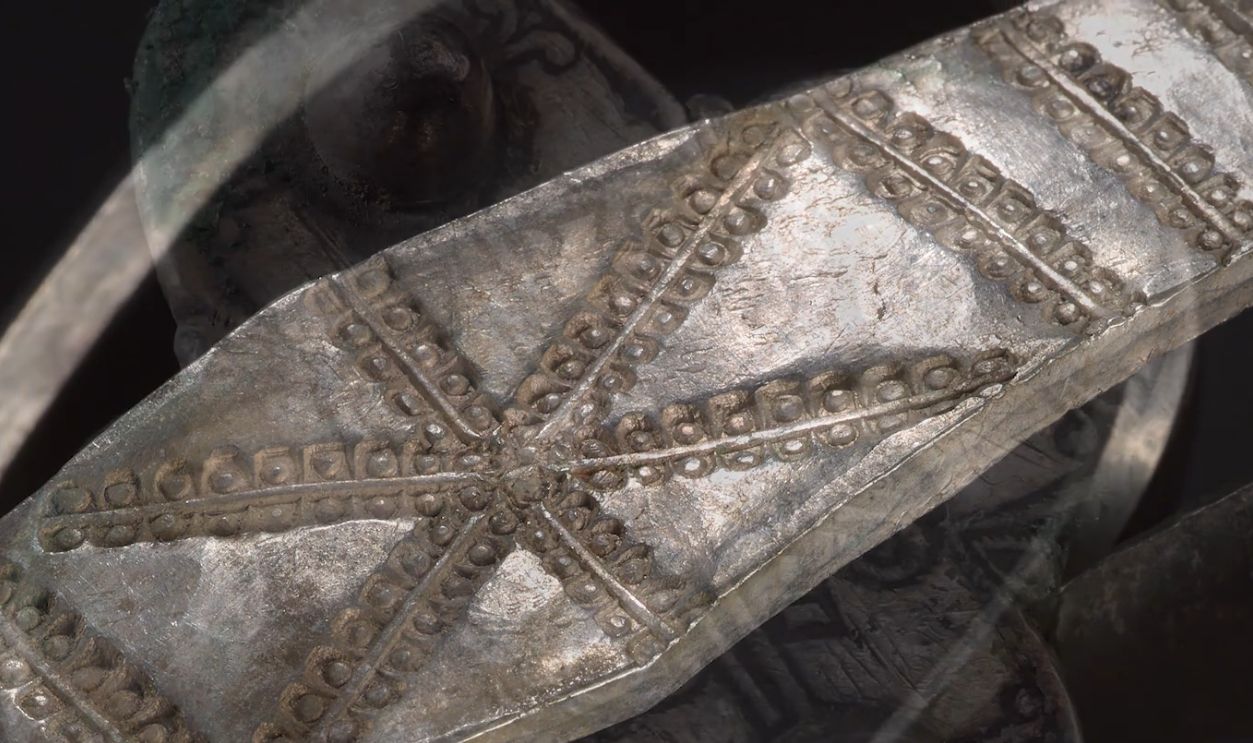 The Galloway Hoard by NationalMuseumsScotland
The Galloway Hoard by NationalMuseumsScotland
Transfer To National Museums Scotland For Conservation
Once secured, the artifacts were transferred to National Museums Scotland, where specialists began a painstaking conservation process. Layers of corrosion were delicately removed and further revealed intricate craftsmanship hidden for centuries. Each piece underwent extensive analysis to get to the details of the long-held beliefs about Viking wealth.
 Jawwad Shadman Siddique, CC BY-SA 4.0, Wikimedia Commons
Jawwad Shadman Siddique, CC BY-SA 4.0, Wikimedia Commons
Guess What They Found? Hint. It Glitters
Weighing over five kilograms, the collection wasn’t just a random stash—it was a jackpot of Viking riches. We are talking about golden and silver coins, arm rings, brooches, and rare fabrics. The sheer quantity suggested this was not one man’s treasure but something far more significant.
 National Museums Scotland, CC BY-SA 4.0, Wikimedia Commons
National Museums Scotland, CC BY-SA 4.0, Wikimedia Commons
They Unearthed A Bullion
A bullion is a collection of precious metals, such as gold, silver, or platinum, valued by weight and typically stored in bars, ingots, or coins. Bullion is often kept as an investment or used for trade. So, this bullion, alongside crafted items, suggests raw material value and artistic expression.
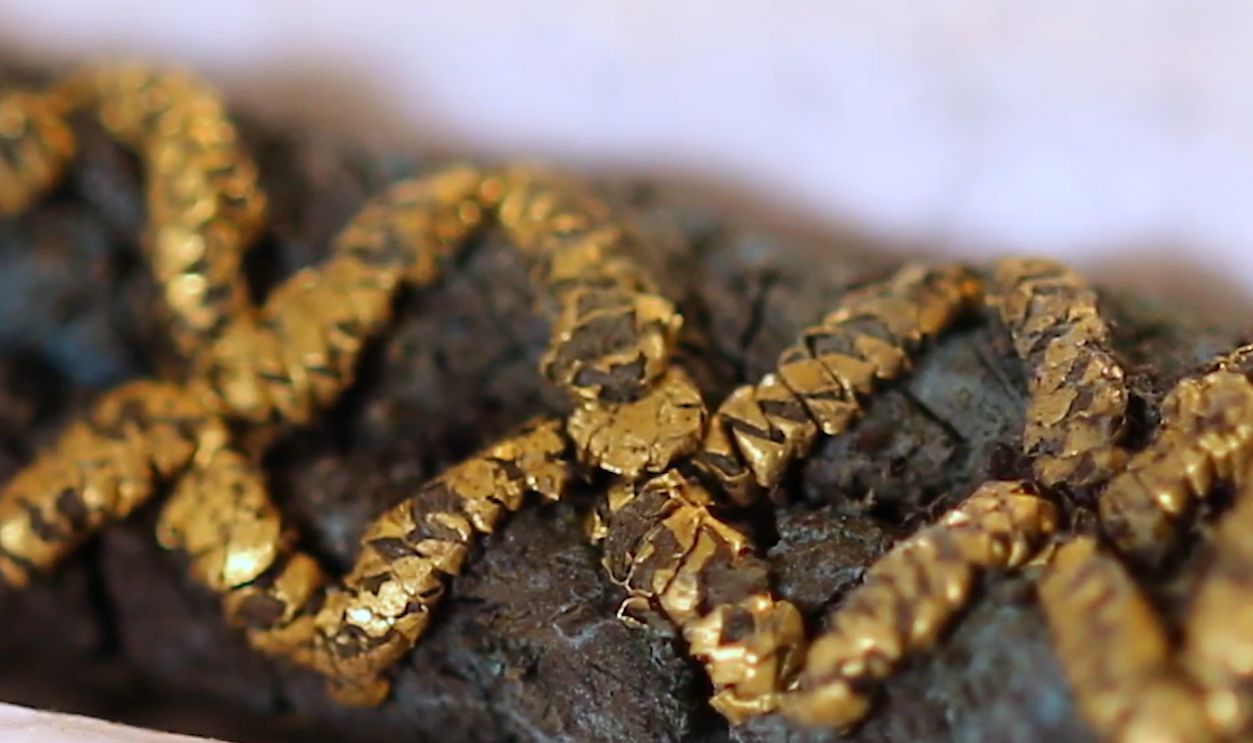 The Galloway Hoard by NationalMuseumsScotland
The Galloway Hoard by NationalMuseumsScotland

History's most fascinating stories and darkest secrets, delivered to your inbox daily.
They Found Over 100 Artifacts
The Galloway Hoard comprises over 100 artifacts of varied origins, including items from Ireland, Scandinavia, the East, and the Anglo-Saxon world. This just tells us that these guys were serious traders. The assortment of items indicates that the collection was collected over time, not amassed from a single source.
 National Museums Scotland, CC-BY-SA-4.0, Wikimedia Commons
National Museums Scotland, CC-BY-SA-4.0, Wikimedia Commons
Use Of Exotic Materials
Beyond precious metals, the collection contains items made from exotic materials such as rock crystal and silk. These materials were not native to Scotland, indicating long-distance trade routes. Their presence in the pile suggests the Vikings had access to luxury goods.
 Hands on History: Rare Viking Treasure by History Hit
Hands on History: Rare Viking Treasure by History Hit
Dating The Hoard To Circa AD 900
Of course, tests and dating had to be done, and the experts spared no resources. From their results, they could place the pile’s burial around AD 900, and this perfectly aligns with a turbulent Viking era. This era was marked by raids, power struggles, and shifting alliances.
 National Museums Scotland, CC-BY-SA-4.0, Wikimedia Commons
National Museums Scotland, CC-BY-SA-4.0, Wikimedia Commons
Some Perspectives On Where The Vikings Were In Circa AD 900
The Vikings were a busy bunch. They settled in parts of Europe, Iceland, and Greenland. Erik the Red, for example, founded the first Norse settlements in Greenland around this time. They traded in Hedeby (more day Germany) and raided others, such as the Siege of Paris in 845.
 Unknown Author, Wikimedia Commons
Unknown Author, Wikimedia Commons
They Were Also…
Spreading Christianity with missionaries like St. Ansgar. Vikings were busy flourishing their art styles, such as the Borre and Jelling styles, characterized by intricate animal ornamentation. So, was this wealth buried in fear, as tribute, or as a secret communal reserve? The mystery only deepened because they seemed busy.
 Siegfried Detlev Bendixen, Wikimedia Commons
Siegfried Detlev Bendixen, Wikimedia Commons
Insights Into Viking-Age Economy
As already established, this find had gold, silver, textiles, and other relics in different materials. This reflects a possible complex economy where wealth was measured in coinage and the weight of precious metals. It provides evidence of standardized measures and trade practices.
 National Museum of Scotland, CC-BY-2.0, Wikimedia Commons
National Museum of Scotland, CC-BY-2.0, Wikimedia Commons
They Found Anglo-Saxon Runes On Silver Arm-Rings
Among the silver relics, arm rings stood out—for their craftsmanship and the inscriptions. These were, of course, first decorative, but they carried messages. Anglo-Saxon runes hinted at deeper cultural entanglements. From this, Viking riches were Norse with complex, multi-regional origins.
 The Galloway Hoard by History Hit
The Galloway Hoard by History Hit
Initial Deciphering Of Three Runic Inscriptions
Experts deciphered three runic inscriptions with personal names among the many. These could be owners, artisans, royalty, gods, or influential figures tied to the stockpile. Each name is a step in the right direction, and it turns the cache from a faceless trove into a historical narrative with a tag.
 Unknown Author, Wikimedia Commons
Unknown Author, Wikimedia Commons
Challenges In Deciphering The Fourth Runic Inscription
One inscription, however, defied translation. Unlike the others, its characters seemed jumbled, and it sparked debates among linguists. Was it a mistake? A secret code? Or something entirely different? The cryptic nature of this arm-ring fueled speculation and demanded a fresh, innovative approach to translation.
 National Museums Scotland, CC-BY-SA 4.0, Wikimedia Commons
National Museums Scotland, CC-BY-SA 4.0, Wikimedia Commons
Re-Examination Of The Undeciphered Inscription
The team doubled down and revisited the puzzling runes with fresh eyes. Linguistic anomalies suggested the original interpretation was off. Instead of gibberish, this might be an overlooked dialect or a rare phonetic spelling. Each stroke and symbol was reevaluated because it just had to make sense.
 Abbey of Saint-Aubin, Wikimedia Commons
Abbey of Saint-Aubin, Wikimedia Commons
The Hypothesis Of Spelling Variations Began
The team working on the project proposed that the inscription’s odd structure stemmed from spelling variations and pronunciation shifts over time. It has happened before, so why rule it out? Viking-age scribes weren’t following modern grammar rules—they wrote phonetically, reflecting how words "sounded" rather than how they were conventionally spelled.
This Insight Unlocked New Translation Possibilities
The breakthrough came when researchers realized that the runic inscription, “DIS IS IIGNA F,” was technically “wrong”. The key issue was “IIGNAF,” which didn’t match any known medieval language. However, closer examination revealed that the final “F” rune was dotted. It meant “foeh”.
 Template:Asztalos Gyula, Wikimedia Commons
Template:Asztalos Gyula, Wikimedia Commons
Decoding A Viking-Age Message
Identification of the dotted “F” rune indicating “feoh” (wealth) was the missing link. In Old English, “feoh” meant wealth or property—a key clue. Suddenly, the seemingly chaotic inscription hinted at financial ownership, a stark contrast to previous assumptions of purely personal Viking treasures.
 Hands on History: Rare Viking Treasure by History Hit
Hands on History: Rare Viking Treasure by History Hit
Next Was The Interpretation Of ‘IIGNA’
In Old English, this term meant ‘Higna’ (Community). This was rather the game-changer. It insinuated that this wasn’t just one warrior’s loot—but a collective fortune, a treasure bank. This discovery changed the notion that Vikings were purely individualistic raiders. It was now possible that their societies had shared assets.
 Marieke Kuijjer, CC-BY-SA-2.0, Wikimedia Commons
Marieke Kuijjer, CC-BY-SA-2.0, Wikimedia Commons
The Final Translation?
“This is the community’s wealth/property”. Unlike typical Viking finds, this suggested collective ownership, possibly by a monastery or religious group. For once, we are led to believe that this was safeguarded wealth, intentionally buried for reasons still shrouded in mystery.
 Nicholas Roerich, Wikimedia Commons
Nicholas Roerich, Wikimedia Commons
Potential Connections To Monastic Communities
Some artifacts in the hoard, such as the pectoral cross, suggest possible connections to monastic communities. This raises questions about the interactions between Vikings and religious institutions, including possible alliances, trade, or conflicts. It challenges the simplistic view of Vikings solely as raiders of monasteries.
 National Museums Scotland, CC-BY-SA-4.0, Wikimedia Commons
National Museums Scotland, CC-BY-SA-4.0, Wikimedia Commons
So, The StockPile Was Possibly Owned By A Religious Group
The Vikings initially practiced Old Norse religion, also known as Norse paganism. The shift to Christianity was between the 8th and 12th centuries. During AD 900, the process had begun but wasn’t complete. So, if this hoard belonged to a religious community, it must have been from... hold that thought!
Why The Finding Links To Religion
You might wonder why researchers went the religious way; well, the pile included a pectoral cross and a rock crystal jar linked to Bishop Hyguald. These were not Viking war spoils—they were Christian artifacts, likely belonging to a high-status ecclesiastical figure. This was no ordinary Viking stash.
 The Galloway Hoard by NationalMuseumsScotland
The Galloway Hoard by NationalMuseumsScotland
Insights Of The Rare Anglo-Saxon Cross
The cross’s presence in the stash indicates the Vikings’ extensive reach and interactions with neighboring cultures (and religions). Its design elements reflect a blend of artistic influences and shed light on the interconnectedness of early medieval societies.
 Hands on History: Rare Viking Treasure by History Hit
Hands on History: Rare Viking Treasure by History Hit
There Were Also Central Asian Artifacts
A lidded urn from central Iran was part of the treasure, dating back millennia. This vessel’s journey from West Asia to Scotland underscores the vast trade networks of the Viking Age. We knew Vikings were traders, but its presence suggests they engaged in long-distance trade, far, far away.
 Sergey Ivanov, Wikimedia Commons
Sergey Ivanov, Wikimedia Commons
Plausible Urn Source
The urn’s imagery is possibly linked to Zoroastrianism. For context, Zoroastrianism is one of the world’s oldest monotheistic faiths, established by the prophet Zoroaster in age-old Persia. It was centered around the worship of Ahura Mazda and the notion of duality between good and evil.
 LBM1948, CC-BY-SA-4.0, Wikimedia Commons
LBM1948, CC-BY-SA-4.0, Wikimedia Commons
Preservation Of Rare Textiles
Remember the fabrics? Those were exceptionally well-preserved, and the batch included silk, wool, and linen. The discovery of silk, in particular, points to trade connections with the East, as silk was a luxury material not produced locally. The wool and linen? Those were likely sourced locally.
 Hands on History: Rare Viking Treasure by History Hit
Hands on History: Rare Viking Treasure by History Hit
Unique Burial Practices
There was nothing typical about this burial site because it was in distinct layers and parcels, a method not commonly observed in other Viking-age hoards. This deliberate arrangement may indicate ritualistic practices or a structured approach to safeguarding valuable items.
 Hands on History: Rare Viking Treasure by History Hit
Hands on History: Rare Viking Treasure by History Hit
Why The Layering, Though?
The careful layering of artifacts might suggest a planned deposition, possibly reflecting the social or religious hierarchy of the items’s owners. The most precious ones are mostly buried deeper. This practice could indicate an intention to retrieve the relics later or serve as an offering. Further study may reveal more.
 Hands on History: Rare Viking Treasure by History Hit
Hands on History: Rare Viking Treasure by History Hit
Evidence Of Craftsmanship And Repair
When metal is fixed, you might see it upon close inspection, and that’s what the researchers found. Several items in the hoard show signs of repair, pointing to the value placed on these objects and the skills of Viking-age craftsmen. This could point to a culture that values sustainability and longevity.
 Hands on History: Rare Viking Treasure by History Hit
Hands on History: Rare Viking Treasure by History Hit
We Get A Glimpse Of Their Technique In Metal Work
Finding these “fixer-uppers” also gives insights into the techniques used in metalwork and jewelry repair during this period. It also points to a sense of attachment to particular objects, possibly due to their symbolic or personal significance. This aspect offers a more nuanced view of Viking material culture.
 Hands on History: Rare Viking Treasure by History Hit
Hands on History: Rare Viking Treasure by History Hit
So, Who Owned The Galloway Hoard?
We are yet to find out because, at that time, the region was part of the Kingdom of Northumbria, which had been experiencing significant Viking influence and settlement. While specific records of local leaders are scarce, it’s plausible that the hoard was associated with a prominent community or religious group.
 Hands on History: Rare Viking Treasure by History Hit
Hands on History: Rare Viking Treasure by History Hit
Dr Martin Goldberg’s Statement
Dr Martin Goldberg, a leading voice in the study, emphasized how this find reshaped our understanding of Viking wealth. He pointed out that it proved Vikings engaged in sophisticated economic systems, far removed from the stereotype of mindless raiders hoarding stolen gold.
Dr Parsons’s Insights
On the linguistic front, Dr Parsons highlighted the linguistic hurdles the team faced. Ancient dialects, inconsistent spellings, unknown symbols, and phonetic interpretations made the translation process a puzzle. His insights underscored how much history remains hidden in undeciphered runes, waiting for fresh perspectives.
 The Galloway Hoard inscriptions with Dr David Parsons by DGC Graphics
The Galloway Hoard inscriptions with Dr David Parsons by DGC Graphics
After Three Years Of Intense Study
The Unwrapping the Galloway Hoard project has concluded, revealing insights that redefine Viking-age wealth. Supported by the UKRI Arts and Humanities Research Council (AHRC), the project has uncovered the finding’s multinational origins, named individuals, and communal ownership, challenging long-held assumptions.
 Hands on History: Rare Viking Treasure by History Hit
Hands on History: Rare Viking Treasure by History Hit
A Legacy Of Discovery
Christopher Smith, chairman of AHRC, highlighted the project’s series of groundbreaking revelations. From tracing the hoard’s materials to distant lands to identifying personal names, each discovery has reshaped history. The final breakthrough—deciphering the runic inscription—adds a compelling new chapter to the Viking legacy.
 Hands on History: Rare Viking Treasure by History Hit
Hands on History: Rare Viking Treasure by History Hit
Wrapping Up The ‘Unwrapping The Galloway Hoard’ Project
With the project wrapped up, the findings painted a more precise picture: The Galloway Hoard was a treasure and a statement. It provided an unprecedented look into Viking communal wealth, religious interactions, and the linguistic intricacies of a long-lost world.
 National Museums Scotland, CC-BY-SA-4.0, Wikimedia Commons
National Museums Scotland, CC-BY-SA-4.0, Wikimedia Commons
Announcement Of Findings Ahead Of The International Exhibition
The findings were announced to the public before the world could see these revelations firsthand. This breakthrough added fresh excitement to the stash’s exhibition, and it ensured that visitors would view the artifacts through a brand-new historical lens.
 Hands on History: Rare Viking Treasure by History Hit
Hands on History: Rare Viking Treasure by History Hit
The Galloway Hoard Exhibition In Adelaide
Do you want to see the relics in real life? You can because they are now showcased at the South Australian Museum at the Galloway Hoard. With its newfound historical context, this collection of ancient valuables is a tangible link to a Viking-era economy built on community, faith, and mystery.
 Hands on History: Rare Viking Treasure by History Hit
Hands on History: Rare Viking Treasure by History Hit
The Galloway Hoard’s Journey Continues
The international tour of the Galloway Hoard is far from over, with more venues set to be announced soon. As the artifacts continue to enthrall audiences worldwide, plans are also in motion for their permanent display after the tour concludes. It includes a return to Kirkcudbright, near the site of their discovery.
 Hands on History: Rare Viking Treasure by History Hit
Hands on History: Rare Viking Treasure by History Hit







